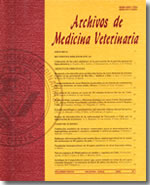Fitness and sensitivity analysis of a model to estimate carrying capacity in the habitat from white-tailed deer
Main Article Content
Abstract
The aim of this study was to fit a model to estimate the carrying capacity (K) for white-tailed deer and to perform a sensitivity analysis using data of a hunting ranch located in the semi-arid region of Aguascalientes, Mexico. The model had two main components, the first one calculates the metabolizable energy available in a given area from the accessibility of vegetal matter by strata (forbs, grasses, shrubs, trees and the total biomass), and the second component considered the energetic cost of the deer based on its physiological state, sex, approximated live weight and time of the year. The sensitivity analysis revealed that the variables with a higher impact on the value of change of K (> 5%) are the digestibility of the food, the total available biomass and the live weight of the animal. The lower impact on K (< 5%) is caused by the type of plant, their proportion in the site and the sex or the physiological state of the animal. It was possible to observe that the increase in the plant variables improves the carrying capacity whereas the increase in the animal energy requirements reduces it.

